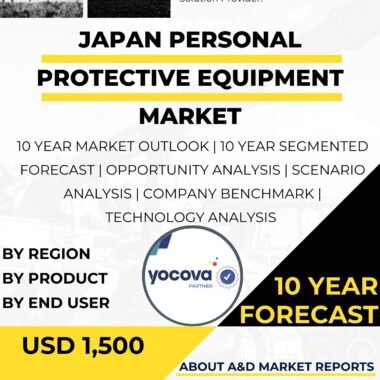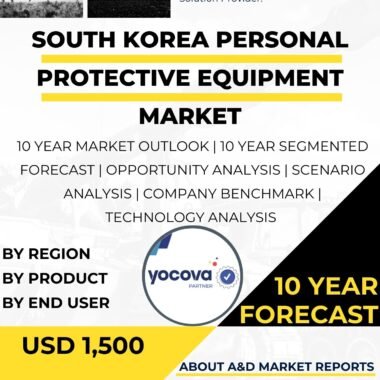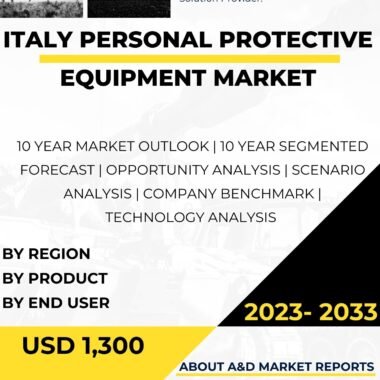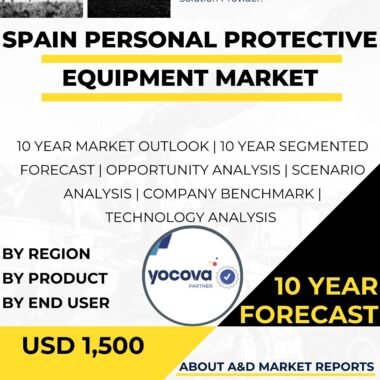Description
The Personal Protective Equipment (PPE) market in Malaysia has experienced significant growth and transformation in recent years, driven by various factors such as increasing awareness of workplace safety, government regulations, and the impact of the COVID-19 pandemic. Personal protective equipment plays a critical role in safeguarding the health and safety of workers across different industries, including healthcare, construction, manufacturing, and others. The demand for PPE in Malaysia has surged as businesses and individuals prioritize safety and take measures to mitigate health risks.
The COVID-19 pandemic has been a major catalyst for the expansion of the PPE market in Malaysia. The outbreak highlighted the importance of protective measures to prevent the spread of the virus. The high demand for PPE, such as face masks, gloves, and protective clothing, surged during the pandemic, with both the public and healthcare workers requiring these items to stay protected. The pandemic exposed the vulnerability of global supply chains, leading to efforts to strengthen domestic PPE production and reduce dependency on imports.
The Malaysian government has taken measures to support the domestic PPE industry. It has promoted local production and encouraged investments in PPE manufacturing facilities. This push for self-sufficiency and resilience in PPE supply has contributed to the growth of the domestic market.
The adoption of workplace safety regulations and standards has also influenced the PPE market in Malaysia. Various industries, including manufacturing, construction, and healthcare, are subject to specific safety requirements to protect workers from occupational hazards. Employers are increasingly investing in PPE to comply with these regulations and ensure the well-being of their workforce.
Moreover, the growth of industries such as oil and gas, construction, and manufacturing has driven demand for PPE in Malaysia. These sectors require workers to perform hazardous tasks, making PPE an essential part of their daily work routines. The increasing emphasis on occupational safety in these industries has led to the greater adoption of PPE.
In addition to traditional industries, the healthcare sector has been a major driver of the PPE market in Malaysia. Healthcare workers require specialized PPE to protect themselves from infectious diseases and other biological hazards. The demand for PPE, including medical-grade masks, gloves, gowns, and face shields, surged during the pandemic as healthcare facilities faced unprecedented challenges.
The growth of e-commerce platforms and online retail channels has facilitated the accessibility of PPE to the public. The ease of online shopping has made it convenient for individuals and businesses to procure PPE quickly and efficiently. E-commerce platforms have become a significant distribution channel for PPE suppliers, allowing them to reach a broader customer base.
Furthermore, PPE manufacturers and suppliers in Malaysia have focused on product innovation and development to meet the diverse needs of different industries. The introduction of advanced materials and technologies has resulted in more comfortable, durable, and effective PPE products. This focus on innovation has contributed to the expansion of the PPE market and the continuous improvement of safety standards.
The distribution of PPE in Malaysia involves various channels, including direct sales to businesses, government procurement, and retail distribution to individuals. PPE suppliers often work closely with industrial safety experts and regulatory bodies to ensure compliance with relevant safety standards and certifications.
The PPE market in Malaysia is not without challenges. The COVID-19 pandemic led to a surge in demand for PPE, leading to supply shortages and price volatility. This created challenges for both businesses and individuals seeking to procure adequate PPE supplies. While the domestic PPE manufacturing capacity has grown, ensuring a stable supply of PPE remains a priority.
Counterfeit and substandard PPE have also been a concern during the pandemic. The influx of low-quality PPE into the market poses risks to users’ health and safety. To address this issue, authorities have taken steps to crack down on counterfeit products and enforce quality control measures.
Looking ahead, the PPE market in Malaysia is expected to continue growing. The awareness of workplace safety and the importance of personal protection is likely to remain high, even after the pandemic. The government’s efforts to strengthen domestic manufacturing capabilities and promote the use of PPE in various industries will further support market growth.
Moreover, the emergence of new infectious diseases and other workplace hazards will continue to drive demand for PPE in Malaysia. Businesses and individuals will continue to prioritize safety, and the PPE industry will play a vital role in meeting these needs.
In conclusion, the Personal Protective Equipment market in Malaysia has experienced significant growth and transformation in recent years, driven by factors such as the COVID-19 pandemic, workplace safety regulations, and increased awareness of personal protection. The demand for PPE has surged across industries, with a particular focus on healthcare and essential industries. The Malaysian government’s support for domestic PPE manufacturing and distribution has strengthened the market’s resilience and self-sufficiency. Challenges related to supply chain disruptions and counterfeit products have been addressed with regulatory measures and quality control efforts. Looking ahead, the PPE market in Malaysia is expected to continue growing as safety remains a top priority for businesses and individuals.




